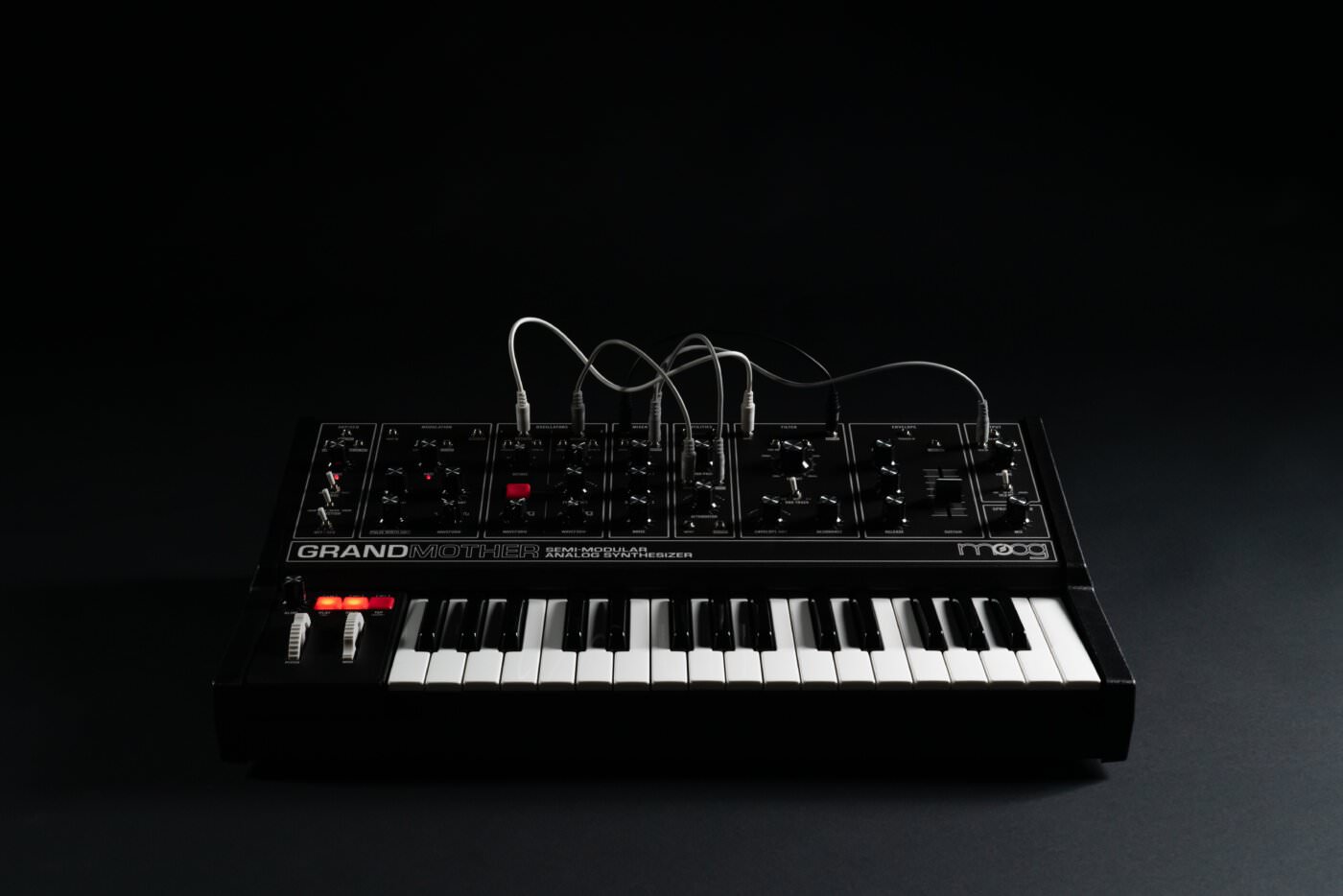Mike Adams might be stepping down as CEO but Moog is in good stead and Mike’s legacy is assured. He packed a punch in his long stint leading the American firm and this monosynth packs a punch too. Having waited patiently to get it on the test bench, we finally put it through its paces.
Moog certainly needs no introduction to Attack acolytes out there, being perhaps one of the few synthesizer manufacturers to be known well beyond the world inhabited by ardent followers of electronic music production. However, whilst Bob Moog – the legend behind the name – carried on making synths and related technology throughout, the fate of Moog (the company) has had some significant ups and downs.
Sadly, although he is no longer with us, he did live to see the company bearing his name return to his ownership and flourish once again. In fact, Moog both benefited from, and responded to, the ongoing interest in all things analogue.
The added factor of a modular synth market that sees little sign of cooling has since gone on to re-issue the classic System 55, System 35, Model 15 and Model III, which made use of the now-legendary 900 series modules. However, these were expensive boutique items, so thankfully Moog has been introducing more modestly-priced multi-function patchable modules, such as the Mother-32, DFAM (Drummer From Another Mother) and Subharmonicon.
Into this, they continue to create new analogue keyboards embracing aspects from the full swathe of Moog history. It is into this spirit that the Grandmother was dreamt-up.
One Bad Mother
The Grandmother in its original form embraced a striking front-panel colour scheme as a way of identifying the various functional sections that contributed to its sound generation. This modular-style approach is reinforced by the fact that, whilst the synth is a very able pre-configured analogue synth, it includes mini-jack patch points on both the front and rear panels for more complex patch creation and connecting to other synths or modules.
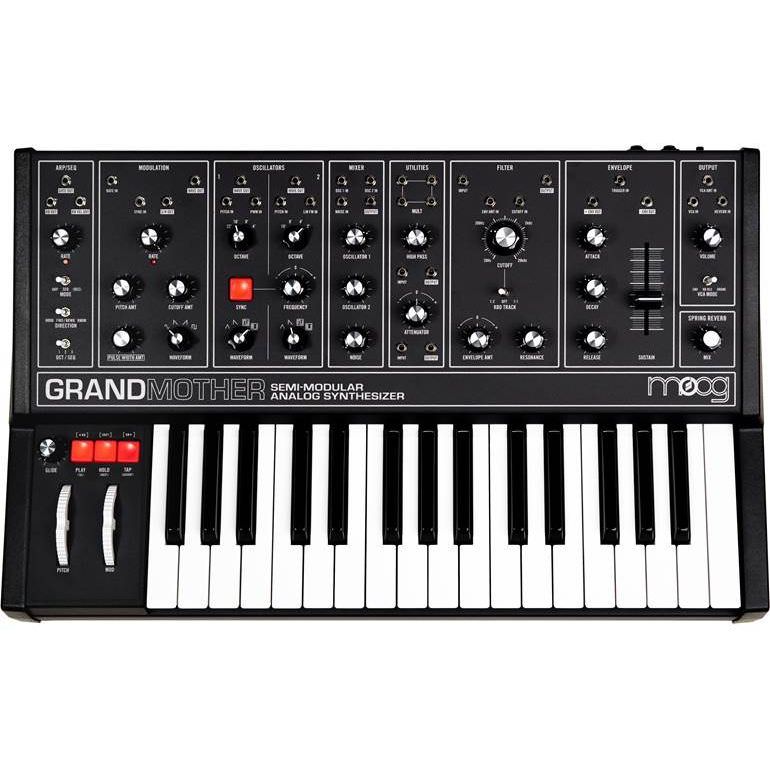
This semi-modular approach can be found on the legendary ARP 2600, albeit in a more elaborate form (see Attack’s review of the excellent Antonus 2600). Nonetheless, it does mean that if (God forbid) you feel like you are outgrowing your Grandmother – it still doesn’t sound quite right as a synth name – you can add extra functionality into the mix.
It is with this nod to Moog modular systems from the 60s and 70s that the Dark Edition livery was introduced, and possibly for those who take a more serious view of synth aesthetics (or with more Gothic proclivities). Regardless of your take on the various colour schemes, the underlying functionality remains the same, and this is a very good thing as the Grandmothers ‘modules’ are infused with influences from some excellent places. This includes the Voyager (where the modern Moog synth rebirth began 20 years ago) and the aforementioned 900 series modules, which lay the groundwork for….well, electronic music as we know it today!
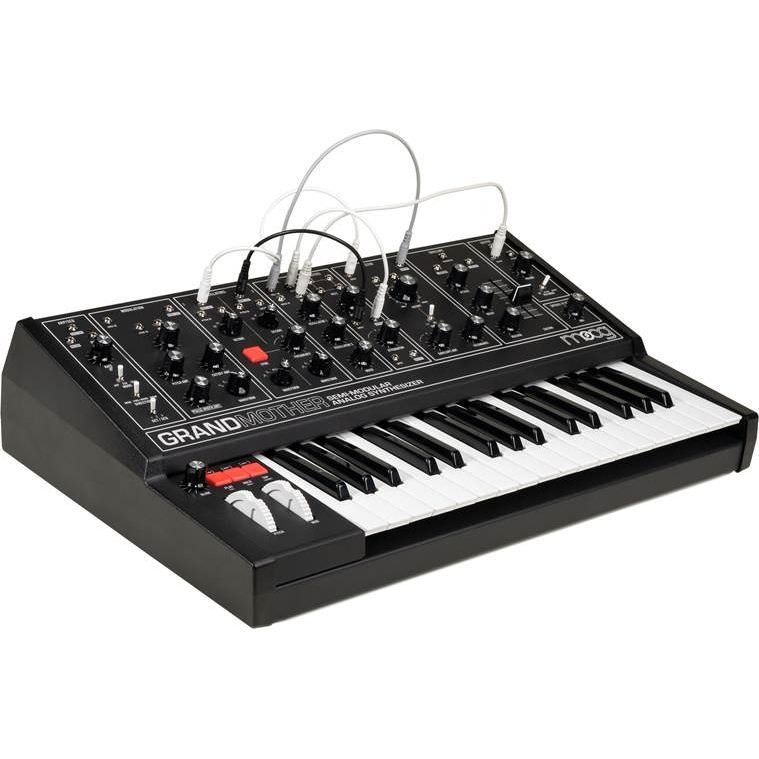
The Grand Tour
The synth’s main elements are broken down into nine ‘modules’. Running from left to right, these are the Arpeggiator/Sequencer, Modulation, Oscillators, Mixer, Utilities, Filter, Envelope, Output and Spring Reverb. Some of these might sound less than glamorous, but all have their place and we’ll explore the detail shortly. On the rear, you’ll find audio outputs (and an input), MIDI and USB control connectivity as well as analogue clock and stop/start/reset ports for the Arp/Seq section.
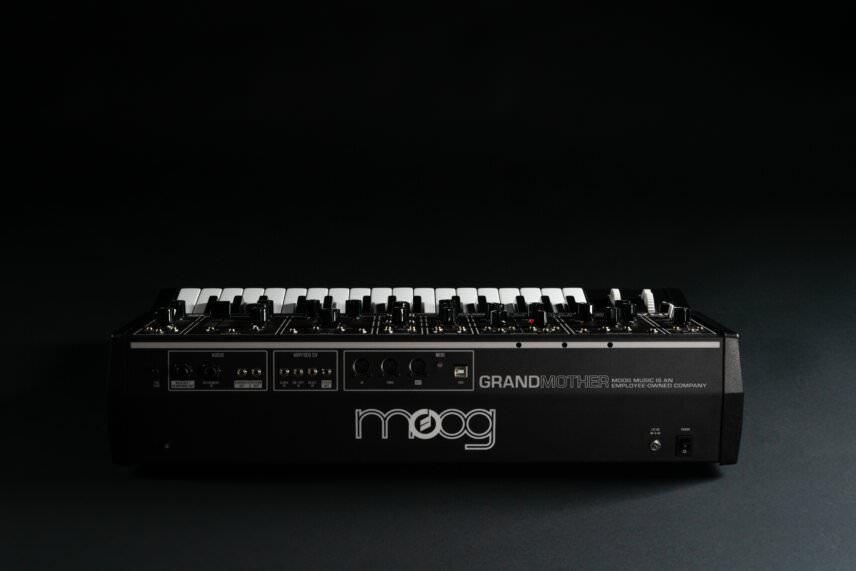
Let’s return to the front panel and look at the detail. At the core of any subtractive synth lies the oscillators, and with the Grandmother, you have two main VCOs (Voltage Controlled Oscillators) each with a similar range of available wave shapes – triangle, saw, square and narrow pulse (a reedier sounding variation on the square wave).
VCO 2 can be detuned relative to VCO 1, and there is a Sync option. Hard-sync such as this is a well-established technique that resets a slave oscillator every time the master passes through its zero-crossing point and is great for creating complex metallic tones or screaming leads. Both VCOs have CV patch-points for Pitch Input and raw waveform output. Additionally, there is a PWM (Pulse Width Modulation) input on VCO 1 and Linear FM input on VCO 2. PWM allows you to modulate the width of the square and narrow pulse waveforms, and when modulated by an LFO adds extra thickness to a single oscillator.
Linear FM on the other hand allows you to add variable side-band signals to a simple waveform output. These occur when you modulate one oscillator’s pitch from another (at audio frequencies, rather than a slower-moving LFO which will create vibrato-style modulation). FM allows you to create bell-like and metallic tones, as well as outright nastiness.
Next, we have the Mixer, which in itself might appear rather boring. The two VCOs each get their own level control alongside a further one for the built-in noise generator. There are also patch-points for overriding the input sources and output. The mixer itself is based around the Moog CP3 circuit, which wasn’t (and still isn’t) perfect. Its design means that it has limited headroom at the inputs (leading to distortion when the extra gain is added) and some interference between inputs (allowing a loud signal to interfere with the level of another). However, this rather unruly behaviour – most obvious when the controls are pushed past 1or 2 o’clock – adds an extra layer of interest and all-important ‘vibe’ to the party. Surely that is what we want in an analogue synth?
However, this rather unruly behaviour - most obvious when the controls are pushed past 1or 2 o’clock - adds an extra layer of interest and all-important ‘vibe’ to the party. Surely that is what we want in an analogue synth?
The Mixer feeds the all-important Filter section. The VCF (Voltage Controlled Filter) is based around the resonant low-pass 24dB/octave (transistor ladder) 904a board employed in some of Moog’s earlier modular systems. This already makes it a classic, and it is a pleasure to use.
Besides the more obvious tonal shaping it offers, resonance can be pushed into self-oscillation, which with appropriate keyboard tracking allows you to ‘play’ the resonance chromatically on the keyboard. The filter also provides some very tasty ‘squelch’ when required, and works well with the Envelope Amount knob turned up. Besides audio ins and outs, the filter offers CV inputs for controlling both the Cutoff frequency and the Envelope Amount.
The signal then passes through a VCA (Voltage Controlled Amplifier) section based on the Moog 902 and into the Spring Reverb module (Moog 905) with a wet/dry control on to the final output. The spring reverb is great and is a very vintage-sounding addition.
The Output Module allows you to configure how the VCA functions, with modes for it to be continuously open (DRONE), fully under the control of the envelope (ENV), or with an instantaneous attack, constant sustain and envelope-controlled release only (KB RLS). This flexibility is welcomed and is largely in response to the fact that the Grandmother only has one on-board envelope.
Controlling Presence
This brings us neatly to the Envelope module itself. This is a 4-stage ADSR (based on the Moog 911) with a Sustain level control and Attack, Decay and Release pots – an oddly logical way of presenting them. Normally, the envelope would be triggered by keyboard presses or the sequencer, but there is a separate Trigger In an independent positive and negative (inverted) envelope outputs for more creative uses.
It’s now worth stepping back to the Utilities section where you will find a 6dB/octave high-pass filter (though sadly its cutoff cannot be modulated, and is controlled only directly via the front panel), an attenuator/voltage source and parallel ‘Mult’ section. Although front panel space might have precluded it, an additional Mult and Attenuator would have been very useful additions given the wide range of connectivity options onboard.
If (God forbid) you feel like you are outgrowing your Grandmother - it still doesn't sound quite right as a synth name - you can add extra functionality into the mix.
At first glance, the Modulation section looks as though it would be a relatively conventional LFO (Low-Frequency Oscillator). It can of course do this, with its output routed (via suitable ‘amount’ pots) to modulate VCO Pitch, VCF Cutoff and the PWM of VCO 1, and with the overall strength determined by the Mod Wheel position. However, besides offering an independent S/H (randomised sample-and-hold) output, it has both Sync and Rate jack inputs. The latter, combined with the fact that its rate can run to over 1kHz, means that it can be made to act as a 3rd audio oscillator – rather neat, and a bit like a Minimoog in reverse.
The final piece of the pie is the Arp/Seq module, and this is both easy to use and very effective, with different playback ordering options and the ability to add rests, ties, legato transitions and accents to each of the three sequences. Once entered, sequences are triggered and transposed in real-time using the keyboard.
Although the signal path is analogue, there are obviously underlying digital control elements, which mean that there are some aspects of the synth not accessible directly on the front panel, but that can be changed via MIDI CC, SysEx or key-press combinations. Moog has updated the firmware at various points to include new options – and transferring it to the synth is relatively painless – so it is worth checking that you have the latest.
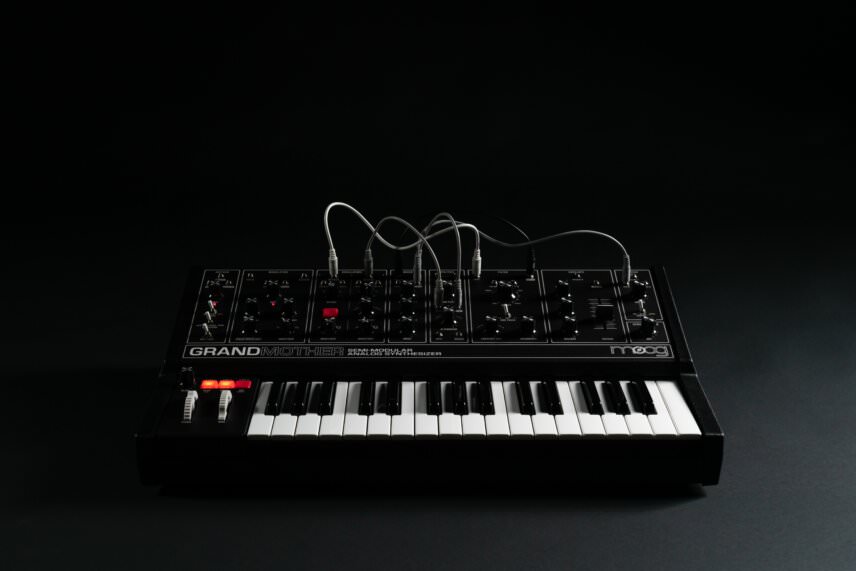
Respect Your Elders
The first impressions I had of the Grandmother, were of a synth that easily conjured up that familiar sound I first found in the music of the 1970s – and that felt really good. Like its keyboard, controls and overall looks, the Grandmother is solid and dependable and can create authoritative bass tones to match. However, even without patching, you can dial up a host of usable sounds – and once you try your hand with the included patch cables, it becomes clear how well designed and flexible the synth really is.
As to which colour option you prefer, that will come down entirely to personal choice. Both versions sound the same (great) and should prove a worthwhile creative investment if you’re in the market for an analogue Monosynth with pedigree. The Moog Grandmother Dark series is currently priced at £977.
How does the Moog Grandmother Dark Series sound?
Buy the Moog Grandmother Dark Series on KMR:
